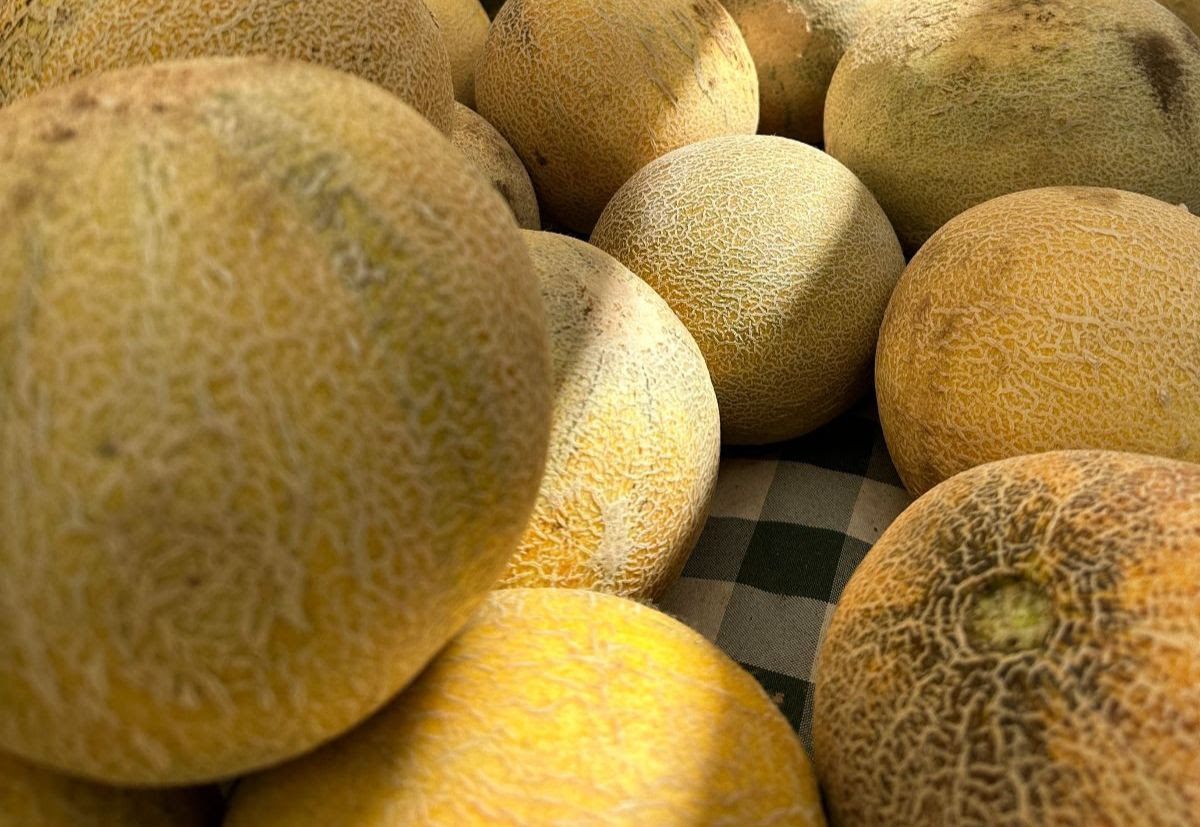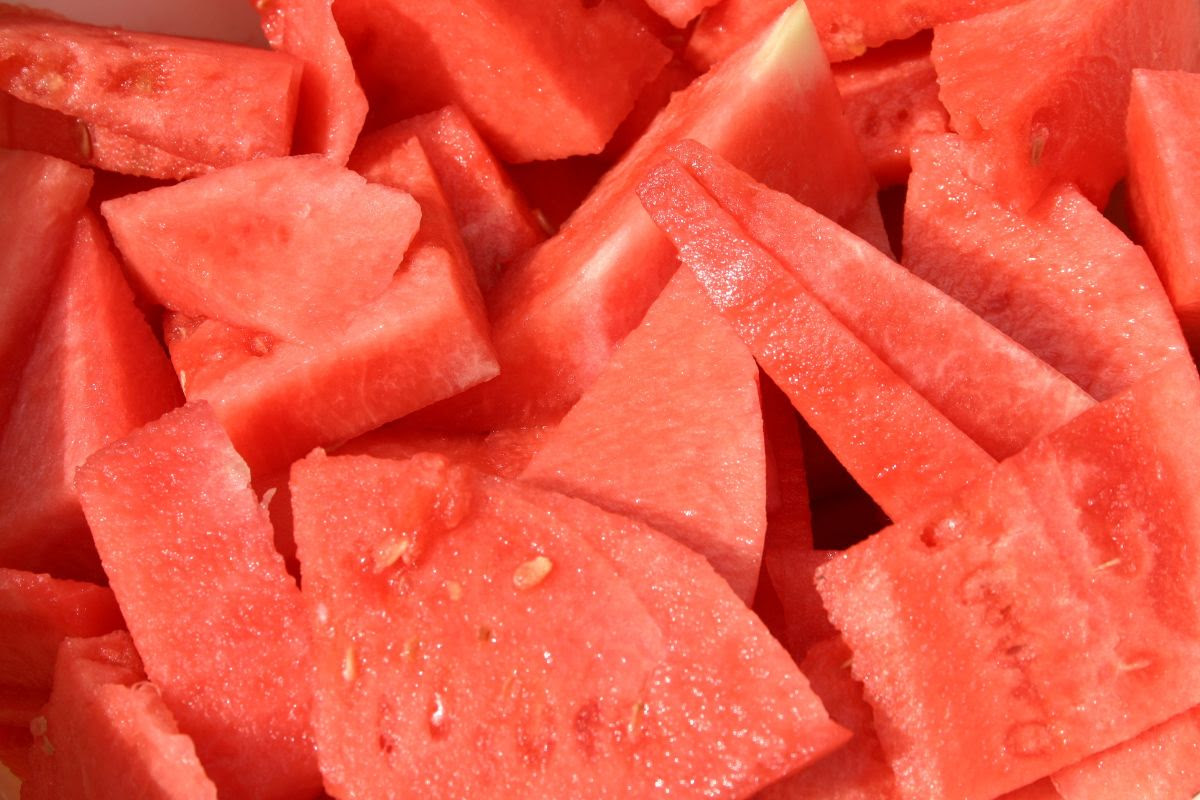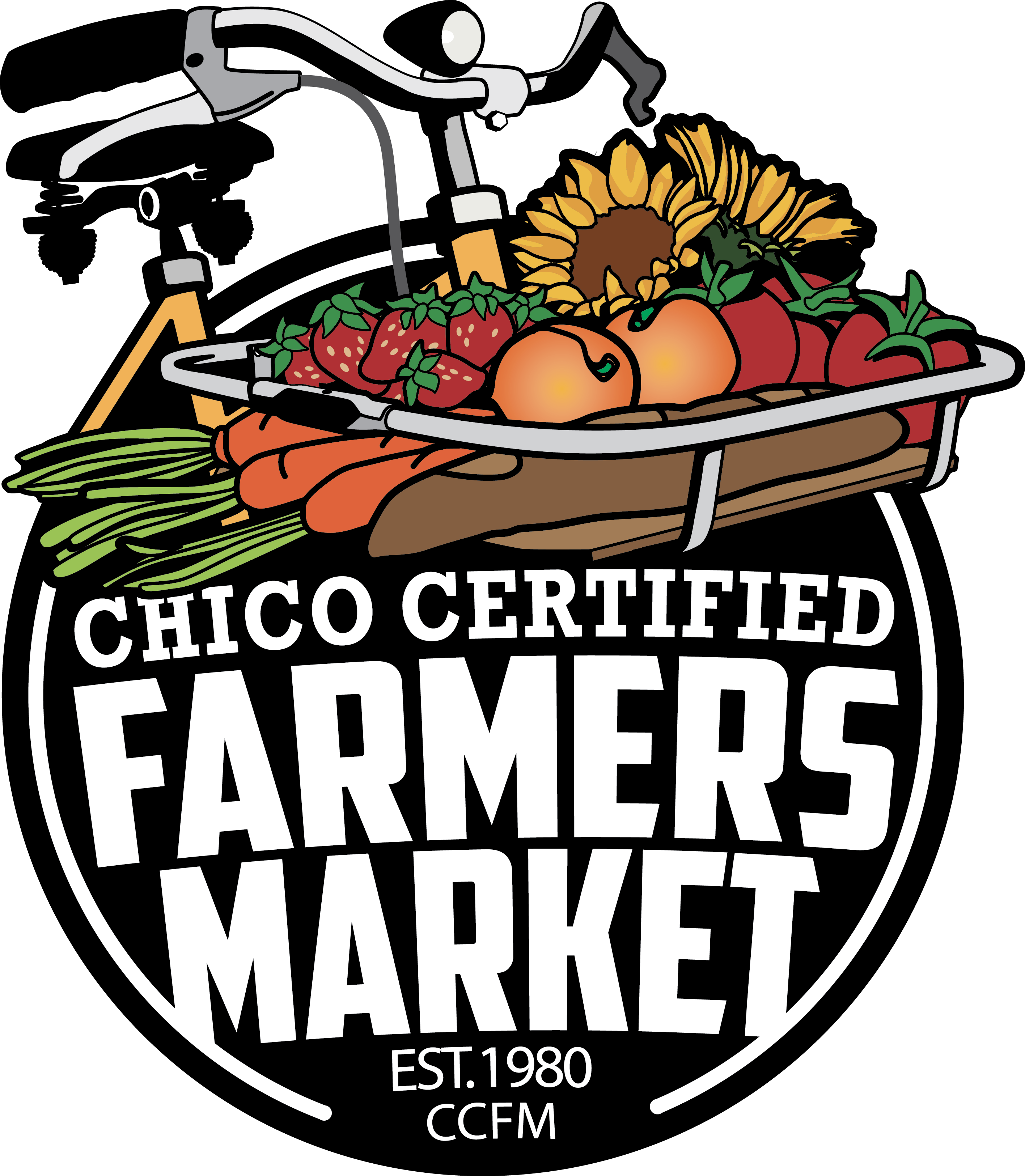Watermelon, cantaloupe, honeydew, and so many more kinds of melons can be found at the Chico Certified Farmers Market. Melons have been a long-time refreshing summer treat, with watermelon being the most popular by far. Today I’ll take you through the big three and share with you the nutritional value, tips and tricks for finding the right one, and some ideas for new ways to eat these fantastic summer treats.


I’ll start with the least popular of the melons because honey DEW deserve a spotlight (and yes the pun is fully intended). So let’s talk about honeydew melons. I will admit, I was not a fan of this pale green melon for a very long time. It’s often found in fruit cups and salads offered at the store or served on the side of a dish at a diner, and it’s often not very ripe. Honeydew melons don’t smell fragrant like a cantaloupe does when it is ripe, and unlike other melons, it doesn’t continue to ripen after it’s cut from the vine. This makes it especially difficult to identify one that’s actually ready to eat, both for the farmer and the consumer. Finding a ripe one is definitely worth it, they are incredibly sweet, with a delicate honeyed flavor, hence the name, honeydew. Here are a few tips on how to pick a ripe one:
- Look for a melon with a bright, creamy yellow color. If it’s too green, it’s probably not ripe.
- Feel the rind. If it feels smooth and waxy, it’s good. If the rind feels dull and dusty, skip it.
- Find the end of the melon opposite to where it was clearly attached to the vine, and gently press on that spot with your thumb. If there’s no give, it’s not ripe, and if it’s too squishy it’ll be overripe. It should feel slightly springy, with a minimal amount of give.
I sincerely hope you’ll give Honeydew a chance. It’s packed with vitamin C and also has significant amounts of iron, vitamin B6, and magnesium. This makes it good for you as well as delicious! Try it plain, or serve it with prosciutto and olive oil for a more sweet and savory snack.


Why couldn’t the melons get married? Because they cantaloupe! Classic jokes aside, cantaloupes are an underrated melon. They taste good even when they aren’t perfectly ripe, and make an excellent addition to all sorts of dishes. They’re loaded with vitamin C, magnesium, iron, and vitamin B6. The nutritional profile of cantaloupe is honestly almost exactly the same as honeydew melon, but the cantaloupe often wins due to its super soft, juicy sweet taste. Here’s how to pick the best one:
- Smell it. A ripe cantaloupe will have a musky, sweet scent.
- Pick it up. A ripe cantaloupe will be heavy for its size.
- Observe it. If the rind looks like it has raised netting all over it, that’s a good sign!
- Poke it. Just like honeydew, the end of the melon opposite where the stem was should be springy to the touch.
Cantaloupe makes an excellent snack and is often the melon of choice to pair with prosciutto (though as mentioned earlier, honeydew pairs well too). You can make a salad dressing out of it or just add it to the salad, blend it with sugar and lemon juice, freeze it to make popsicles, toss it in a smoothie, or make a cocktail out of it. There are tons of things you can do with a cantaloupe!


Watermelon. What would summer be without it? The average American eats 16 lbs of watermelon per year, which is equivalent to about one whole watermelon per person, per year. That comes out to 331.9 million watermelons. That’s a lot of melons! The watermelon has earned its fame through its sweet flavor, bright red color, and amazing health benefits. Watermelon is not as nutrient-dense as other melons, due to the fact that it simply isn’t as dense. It has the least calories by volume of all the melons and is revered for the hydrating quality of its juice. It’s also a good source of vitamin C, potassium, copper, vitamin B5, and vitamin A as well. Everyone has their own way of determining whether a watermelon is ripe, but here are our tips in case you aren’t sure:
- Stripes. Look for a good, strong pattern of stripes in colors of deep dark green and creamy light yellow.
- The general color of the melon should be dark and dull. Avoid shiny and bright melons, as they are likely underripe.
- The size should be uniform, and the melon should feel heavy.
- Look for field spots (the spot left on the melon from lying in a field) – an orangy spot is a good sign the melon is flavorful, while a pale yellow spot usually means a less flavorful melon.
- There should be large webbing on the skin of the melon. If there is no webbing, or if the webbing is small, the watermelon will likely be bland.
Obviously, watermelon is amazing when consumed straight from the rind, but there are about a million other things you could do with it as well. Juice it with jalapenos and limes to make a spicy and refreshing summer juice that can be drunk as is or mixed into a cocktail. Grill it on a skewer with vegetables to add a sweet kick to a savory snack.
Any way you slice it, melons are great. They are nutritious, versatile, delicious little things. You’ve now got all the information you need to go select yourself the best melon at the market, and wow your friends and family with your culinary skills. I hope the market this week is full of folks with an armful of melons!
************************************************************************************************************************
Looking for recipes? Sign up for our weekly newsletter to get more information on getting the most out of your produce!
